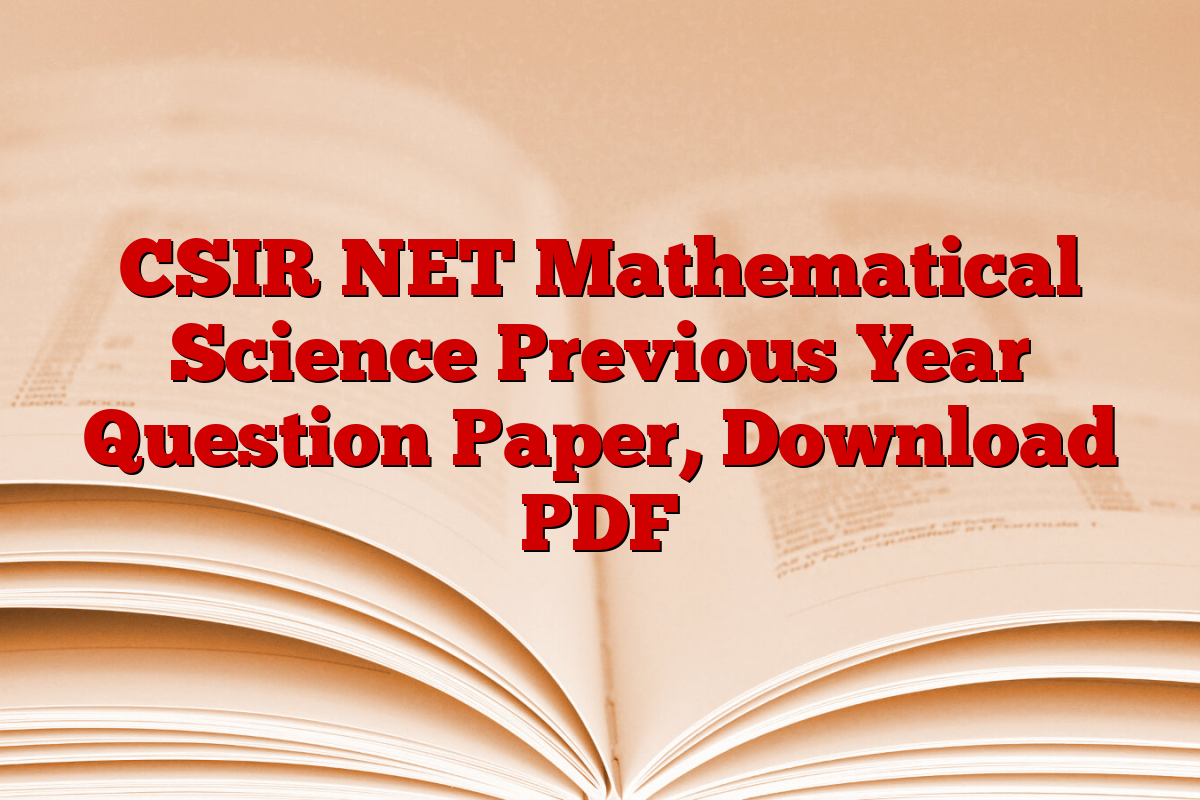The date of CSIR NET Mathematical Science Examination will be released soon. Reviewing CSIR NET Mathematical Science is an essential resource in the previous year’s question paper, which provides valuable insight into examination format, general question type and difficulty level. By solving these letters, candidates can often understand the tested areas, refine their problem skills, and develop effective time-management techniques, eventually their confidence and promptness of exams.
CSIR NET Mathematical Science Last Year Question Paper
CSIR NET Mathematical Science is an essential tool for candidates who have excelled in the previous year’s question paper CSIR NET exam. These papers provide a clear understanding of the examination structure, which highlights the usually tested subjects and the level of difficulty. Practicing CSIR net mathematical science, previous year’s question papers can regularly improve problems-solution skills, help manage time effectively, and can increase accuracy, which are all important for success.
The CSIR NET Mathematical Science Exam is divided into three parts: part A, Covering General Science, Quantitative Logic and Research Qualification; Part B, focus on main subjects in mathematical science; And Part C, which includes advanced application-based questions. By solving the previous year’s papers, candidates can create their confidence and develop a strategy to reach each section of the exam efficiently.
CSIR net mathematical science exam pattern
The CSIR NET Mathematical Science Examination follows a structured pattern designed to test the knowledge and problems of candidates in various aspects of mathematics. The examination is divided into three parts: Part A, Part B, and Part C, each with their specific focus and weightage.
| Part | Description | Number of questions | Per question mark | total marks | Questions to try |
| Part a | General science, quantitative logic and research ability | 20 questions | 2 digits | 30 digits | 15 questions |
| Part be | Core mathematical science subject | 40 questions | 2 digits | 70 digits | 35 questions |
| Part s | Advanced application-based questions | 60 questions | 4 digit | 100 points | 25 questions |
| Total Questions | 75 questions | ||||
| total marks | 200 digits | ||||
| Negative marking | 0.25% for each wrong answer | ||||
CSIR NET Mathematical Science Last Year Question Paper PDF
CSIR NET can increase your preparation significantly by providing the examination format and frequent tested topics in previous year’s question papers while practicing mathematical science. This helps you adapt to the structure of the examination and creates a concentrated approach to each section. Below, you can download CSIR NET MAST MAST Paper PDF last year for further practice:
How to use CSIR NET mathematical science last year question paper?
CSIR NET matches the depth of both knowledge and strategic problem-solving skills. The most powerful preparation equipment has the previous year’s question papers, which provide invaluable insight into the structure, question pattern and difficulty level of the exam. Here is how to take advantage of them effectively:
- Timely exercise for real examination simulation: Rewrite the examination status by solving the previous papers within a tough time limit. This not only assesses your current readiness, but also highlights areas required to improve. Testing at regular times help track progress and create the necessary stamina for real examination.
- Comprehensive Question-Copy Exposure: The previous papers show the full spectrum of questions-from examining the concept to complex application problems. This variety makes sure to familiarize yourself that you will not face surprise on the day of exam. Pay special attention to the recurring question patterns and framing styles.
- Deep ideological understanding: Analyze solutions well and move beyond the root memorization. Each solved paper should strengthen your understanding of fundamental mathematical principles, especially in challenging areas such as complex analysis or abstract algebra. This approach creates flexible thinking required for unexpected questions.
- Accurate under pressure: Use each attempt to speed up both speed and accuracy. Slowly reduce your solution time while maintaining high purity rates. This dual focus prepares you to effectively handle the intensive time obstacles of the exam.
- Strategic theme priority: Identify high-up-topics through careful paper analysis. Allocate more study time in these areas, ensuring balanced coverage of the entire course. This data-manual approach maximizes your scoring capacity.
- Continuous strategy optimization: After each paper, seriously evaluate your performance. From what point of view got the best results? Where did you struggle? Use these insights to refine your study plan, focus more on weak areas and complete your problem solving techniques.
sharing is Caring!

